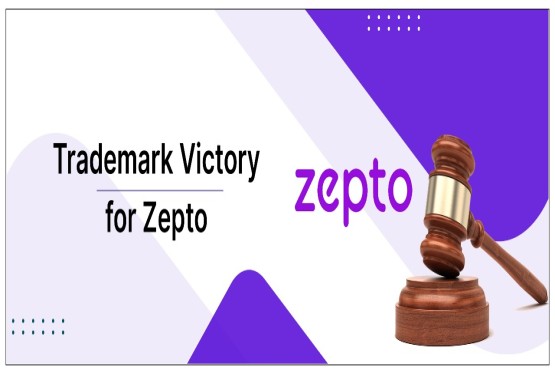Brands are identified not only by their names and logos but also by their unique visual elements, such as packaging, design, color schemes, and overall aesthetic appeal. Collectively, these visual elements constitute a brand's trade dress, which is protected under intellectual property laws to prevent unfair competition and consumer confusion. This article delves into the concept of trade dress infringement, its legal framework, notable case laws, and the remedies available to rights holders.
What is Trade Dress?
Trade dress refers to the visual characteristics of a product or its packaging that distinguish it from competitors in the marketplace. While initially limited to product packaging, the concept has expanded to include product designs, store layouts, and other non-functional aspects that create brand identity.
Key Elements of Trade Dress
-
Visual Appeal: Includes colors, shapes, sizes, textures, and graphics.
-
Distinctiveness: Must be inherently distinctive or have acquired distinctiveness through use.
-
Non-Functionality: Should not serve a utilitarian purpose but rather act as a source identifier.
For instance, the red sole of Christian Louboutin shoes or the unique shape of Coca-Cola bottles are classic examples of trade dress.
Legal Framework Governing Trade Dress
In India, trade dress protection falls under the ambit of the Trade Marks Act, 1999. Although the Act does not explicitly use the term "trade dress," it protects the "shape of goods, their packaging, and combination of colors" under Section 2(1)(zb) as a part of the trademark definition.
1. Trademark Registration and Protection
-
Section 18: Trade dress can be registered as a trademark.
-
Section 9: Trade dress must meet the requirements of distinctiveness and non-functionality to qualify for protection.
-
Section 29: Protects against infringement of registered trade dress.
-
Section 30: Provides for certain defenses against infringement claims.
-
Section 135: Outlines remedies such as injunctions, damages, and accounts of profits.
Essentials of Trade Dress Infringement
Trade dress infringement occurs when the overall appearance of one product is so similar to another that it causes confusion among consumers regarding the origin of the goods. To establish trade dress infringement, the following elements must be proven:
-
Ownership of Valid Trade Dress Rights- The plaintiff must demonstrate that the trade dress is either inherently distinctive or has acquired secondary meaning through extensive use.
-
Likelihood of Confusion- The plaintiff must prove that consumers are likely to be confused about the source of the infringing product. Factors include the similarity in design, market proximity, and evidence of actual confusion.
-
Non-Functionality- The trade dress should not be primarily functional. For example, the shape of a wrench designed to improve grip cannot be protected as trade dress.
Case Law: Colgate Palmolive Co. v. Anchor Health & Beauty Care Pvt. Ltd.
In this case, Colgate sued Anchor for copying its toothpaste packaging. The Delhi High Court ruled in favor of Colgate, stating that Anchor’s packaging was deceptively similar and likely to mislead consumers.
Notable Indian Case Laws on Trade Dress
1. Cadbury India Limited v. Neeraj Food Products
-
Facts: Cadbury sued Neeraj Food Products for using a similar purple and gold color scheme on its confectionery packaging.
-
Ruling: The Delhi High Court held that Cadbury's color combination had acquired distinctiveness and restrained Neeraj Food Products from using similar packaging.
-
Significance: Established that colors, when associated with a brand, can be protected as trade dress.
-
Facts: Dabur alleged that Emami copied the trade dress of its Chyawanprash jar.
-
Ruling: The court ruled in Dabur's favor, emphasizing the need to protect unique packaging to prevent consumer confusion.
-
Significance: Highlighted the importance of protecting distinctive packaging under trade dress law.
3. T.V. Venugopal v. Ushodaya Enterprises Ltd.
-
Facts: A dispute arose over the similarity between the trade dress of two popular regional magazines.
-
Ruling: The Supreme Court upheld the plaintiff's claim, stating that even magazines could have protectable trade dress.
-
Significance: Broadened the scope of trade dress protection to include media products.
Global Perspectives on Trade Dress
Trade dress protection is a well-established concept in jurisdictions like the United States and the European Union.
United States
In the U.S., trade dress is protected under the Lanham Act (15 U.S.C. § 1125). Courts have consistently upheld the protection of distinctive non-functional elements, provided they meet the requirements of distinctiveness and likelihood of confusion.
European Union
The European Union Intellectual Property Office (EUIPO) provides protection for trade dress under the European Union Trade Mark Regulation (EUTMR). The principles of distinctiveness, non-functionality, and likelihood of confusion are central to trade dress protection in the EU.
Challenges in Trade Dress Protection
-
Proving Non-Functionality: Trade dress that has utilitarian aspects is often difficult to protect.
-
Secondary Meaning: Acquiring distinctiveness through secondary meaning often requires significant investment in marketing and time.
-
Balancing Competition and Protection: Courts must strike a balance between protecting trade dress and allowing healthy market competition.
Remedies for Trade Dress Infringement
The Trade Marks Act, 1999, provides both civil and criminal remedies for trade dress infringement:
1. Injunctions: Courts can issue interim or permanent injunctions restraining the infringer from using the disputed trade dress.
2. Damages: Plaintiffs can claim monetary compensation for losses incurred due to infringement.
3. Account of Profits: Plaintiffs may seek profits wrongfully earned by the infringer.
4. Delivery Up: Courts may order the infringer to deliver up infringing goods for destruction.
5. Criminal Penalties: Under Sections 103 and 104 of the Trade Marks Act, imprisonment and fines can be imposed for deliberate infringement.
Significance of Trade Dress Protection
1. Consumer Protection: Prevents consumer confusion by ensuring that similar products do not deceive buyers.
2. Brand Equity: Safeguards a company’s goodwill and market identity.
3. Encourages Innovation: Provides an incentive for businesses to create distinctive designs and packaging.
Conclusion
Trade dress infringement is an important issue in intellectual property law that directly impacts brand identity and consumer trust. While the concept has evolved to cover a wide range of visual elements, its protection hinges on the principles of distinctiveness, non-functionality, and likelihood of confusion.
As global trade and competition continue to grow, trade dress protection will play an increasingly vital role in fostering innovation and maintaining fair competition in the marketplace. By understanding the legal nuances and adhering to best practices, businesses can effectively leverage trade dress as a powerful tool for brand differentiation and market success.
FAQs
Q1. What is trade dress, and how does it differ from a trademark?
Ans. Trade dress refers to the visual characteristics of a product or its packaging that set it apart from others in the marketplace. These characteristics include elements like colors, shapes, textures, and overall design that contribute to the product's aesthetic appeal and brand identity. Unlike trademarks, which protect specific words, logos, or symbols that identify the source of goods or services, trade dress focuses on the overall look and feel of the product. Both trade dress and trademarks aim to prevent consumer confusion, but trade dress emphasizes non-functional, distinctive elements of a product's appearance.
Q2.What are the key elements required to protect trade dress under Indian law?
Ans. Under the Trade Marks Act, 1999, protecting trade dress requires proving three essential elements. First, the trade dress must be distinctive, either inherently or through acquired distinctiveness over time. Second, the trade dress must be non-functional, meaning its design does not serve a utilitarian purpose but rather acts as a source identifier. Third, there must be a likelihood of confusion among consumers, demonstrating that the infringing product’s appearance is so similar to the protected trade dress that it misleads consumers about the product's origin. These elements ensure that trade dress protection serves its purpose without extending to functional features or stifling competition.
Q3. Can colors and product shapes be protected as trade dress in India?
Ans. Yes, both colors and product shapes can be protected as trade dress in India, provided they meet the criteria of distinctiveness and non-functionality. For instance, in the landmark case of Cadbury India Ltd. v. Neeraj Food Products, the Delhi High Court ruled that the purple and gold color scheme of Cadbury's confectionery packaging had acquired distinctiveness and was thus eligible for trade dress protection. Similarly, the iconic shape of the Coca-Cola bottle, although not specific to India, serves as a global example of how unique product shapes can qualify for trade dress protection when they function as brand identifiers rather than fulfilling utilitarian purposes.
Q4. What remedies are available for trade dress infringement in India?
Ans. The Trade Marks Act, 1999, provides several remedies for trade dress infringement, both civil and criminal. Civil remedies include injunctions, which can be interim or permanent, to stop the infringer from using the disputed trade dress. Plaintiffs can also seek damages to compensate for losses incurred due to infringement or an account of profits to recover the infringer’s earnings from the misuse. Courts may order the delivery up of infringing goods for destruction. Additionally, under Sections 103 and 104 of the Act, criminal penalties such as imprisonment and fines can be imposed for deliberate trade dress infringement, serving as a strong deterrent against such violations.
Q5. What challenges arise in proving trade dress infringement?
Ans. Proving trade dress infringement involves several challenges. A primary hurdle is demonstrating non-functionality, as trade dress protection does not extend to features that serve a utilitarian purpose. For example, a wrench designed for better grip cannot claim trade dress protection for its shape. Establishing secondary meaning is another challenge, as businesses must provide substantial evidence, such as long-term use or extensive marketing, to prove that their trade dress has acquired distinctiveness. Lastly, courts must strike a balance between granting protection to unique trade dress and ensuring that such protection does not stifle fair competition, which is crucial for fostering innovation and consumer choice.






























_(b)_of_the_Trademark_Act,_1999_(1)_crop10_thumb.jpg)



_crop10_thumb.jpg)




























_crop10_thumb.jpg)
_crop10_thumb.jpg)






_crop10_thumb.jpg)








_crop10_thumb.jpg)



_crop10_thumb.jpg)





























_crop10_thumb.jpg)

















_crop10_thumb.jpg)






_crop10_thumb.jpg)











































































































































_crop10_thumb.jpg)




































_crop10_thumb.jpg)












_crop10_thumb.jpg)






































